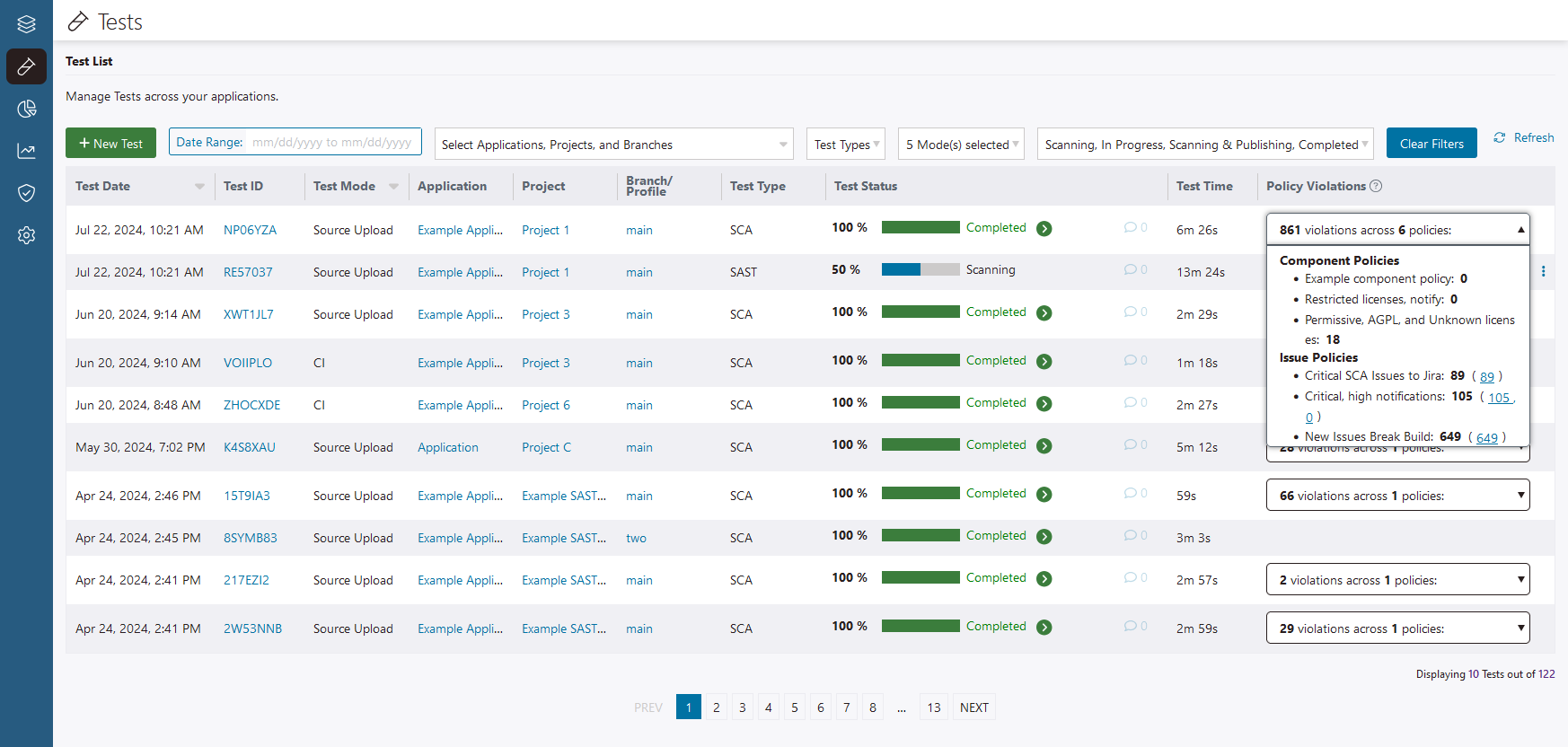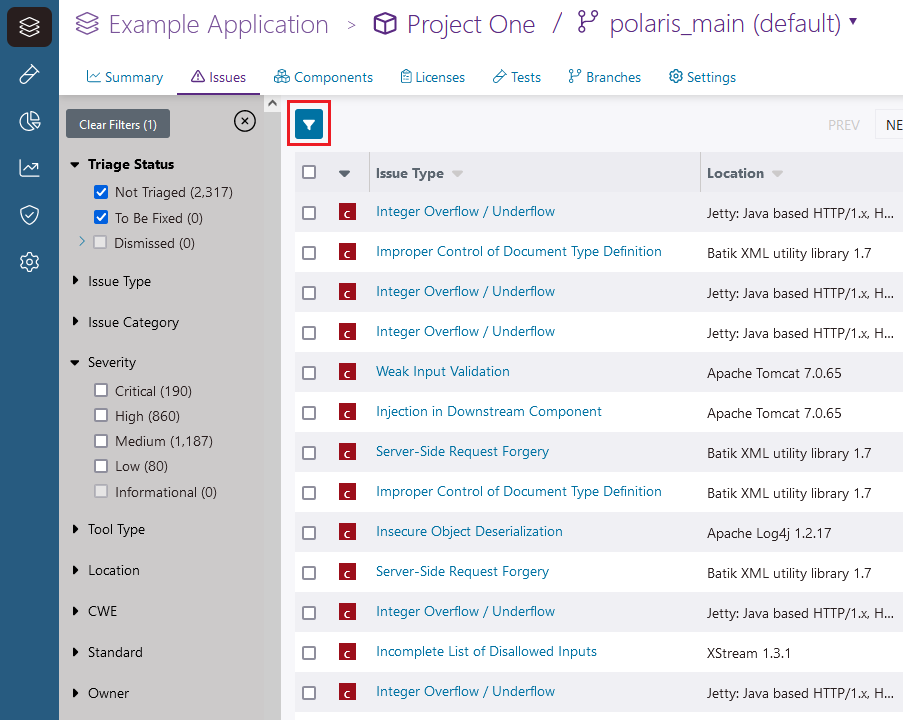Get started: Contributor or Member
By the end of this process, you'll complete the following tasks.
- Upload source files and start SAST and SCA tests
- Monitor tests and view results
- Filter and review issues
- Triage issues
Note: Application contributors and application members have similar permissions in Polaris, but application members cannot create, update, or delete projects.
Upload files and start testing
Note: Before uploading, see the limitations for uploads on the Support page. There are guidelines for file type and size.
Monitor tests and get test results
Filter and review the issues
You can get to the issues in either of the following ways:
- Go to Portfolio, select an application, select a project, and open the Issues tab.
Note: Use the branch pulldown (near the top of the page, next to the project name) to view test results for different branches in your project.
- Go to Tests and select the branch name in a completed test's row.
Triage
There's more than one way to triage issues in Polaris. See Ways to triage issues in Polaris for all the details
 | Dev Portal
| Dev Portal



